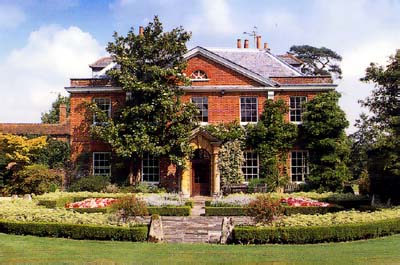
RBH Home
Maps & Travels
Articles
Legends
Towns & Villages
Castles & Houses
Churches
Biographies
Gentry
Family History
Odds & Ends
Mail David
 Hurst Lodge
Hurst LodgeSt. Nicholas Hurst, Berkshire
Hurst Lodge is one of Berkshire's important and historic houses. Originally constructed during the reign of Elizabeth I in about 1580, a classic facade was added to the property in 1700 with a further substantial extension added between 1927 and 1936. The house is constructed of red brick under a clay-tiled roof with both sliding sash and leaded light windows. The accommodation is arranged over three floors and the four principal reception rooms enjoy a wonderful aspect over the gardens to the south. A flat in the east wing provides further impressive accommodation (fully integrated into the main house), in addition to which there are two staff flats and a gardener's cottage. The property is listed Grade II* with fine period detail including Delft tiling, 17th century oak panelling in the reception hall and up the staircase, and some wonderful original flooring and fireplaces.
Hurst Lodge was built, about 1580, by John Barker, Gentleman Usher to Queen Elizabeth I. His son, Henry, has a fine monument in Hurst Church. By 1697, the house had passed by descent to the latter's grandaughter, Frances Fairfax, the wife of the 22nd Earl of Buchan. She died in 1719 and, because of its distance from Scotland, her family subsequently sold the property in the 1740s to Robert Palmer, an attorney from Great Russell Street in Bloomsbury. In 1796, this family's main residence became Holme Park in Sonning, but they still retained Hurst Lodge until around 1919 when it was sold to Sir Philip Martineau. At about this time, it became briefly known as Hurst Court. It was sold, once again, before World War II, to James Palmer-Tomkinson and the house remained in the same family, passing in the 1950s to his daughter, Lady Ingram, whose family remained there until the beginning of the twenty-first century.
Hurst Lodge
is a private residence. It was last offered for sale by FPD Savills &
Lane Fox in 2002.
